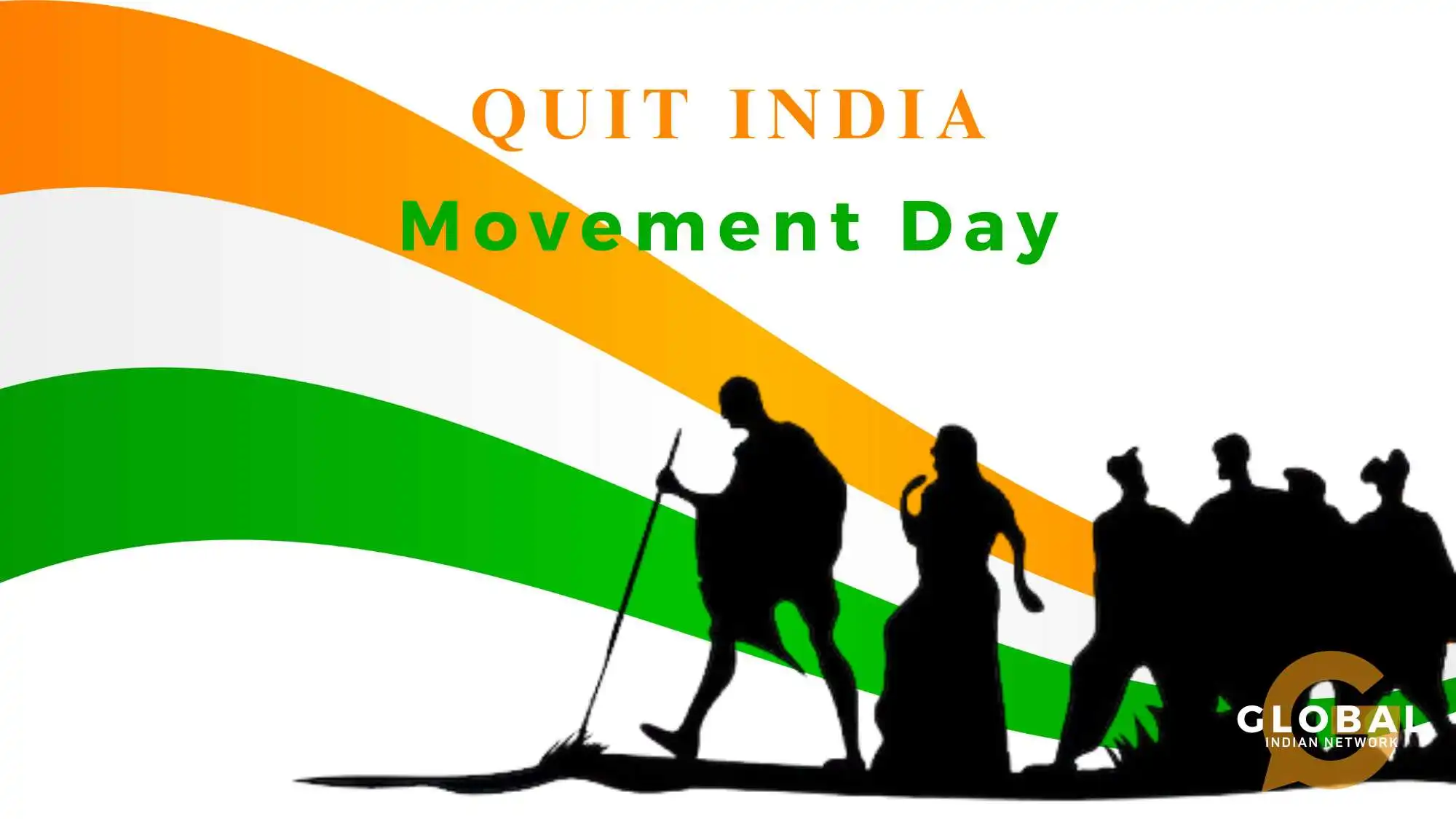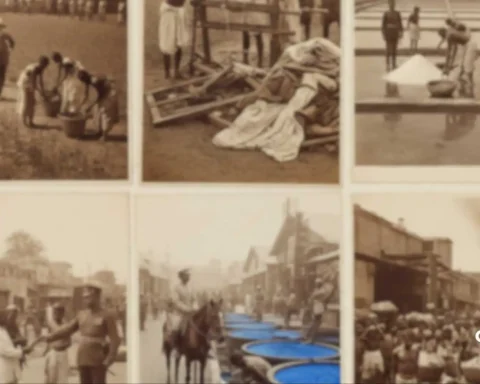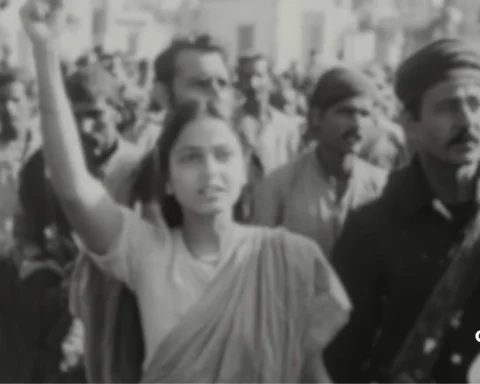Indian Independence is a history of the 21-day fast, mass participation, civil disobedience movement and radical underground activities. It is a history where not only Indian leaders and the political parties took direct leadership, but the Indian nation played a significant role. Mahatma Gandhi introduced the slogan, “We shall either free India or die in the attempt; we shall not live to see the perpetuation of our slavery“, and the entire Indian population got involved for the eventual independence. Thus, one cannot underrate the importance of the Quit India Movement Day.
Table of Contents
What is the Quit India Movement?
On 8 August 1942, a mass protest movement against the British Raj, known as the Quit India Movement or ‘Bharat Chodo Andolon’, was launched. It was initiated by the Father of the Nation, Mohandas Karamchand Gandhi, in an All-India Congress Committee in Mumbai, with his inspirational slogan of ‘Do or die‘. It was a peaceful, non-violent movement to free the nation from the clutches of alien rule.

What are the Three Phases of the Quit India Movement?
Quit India Movement was a Civil Disobedience Movement which happened in three phases:
- The first phase: In the initial stage, the protest was peacefully carried out in metropolitan cities, including strikes, picketing in public places, and economic boycotts. However, the colonial authorities suppressed this. Moreover, Mahatma Gandhi, along with other leaders of the Congress Party, was jailed at Aga Khan Palace.
- The second phase: The second phase was followed up quickly, and mass movement now spread to rural areas, leading to an uprising among peasants and farmers. The rebellion mainly targeted damage to government property, such as railway stations, tracks, electric poles, wires, and government buildings.
- The third phase: In this last phase, provisional and parallel governments in areas such as Ballia, Tamluk and Satara were set up to control the rebellion.
Causes That Led to the Quit India Movement
The causes that motivated Indian people to fight for their struggle for independence are:
- Cripps Mission: The failure of the Cripps Mission was one of the major factors driving the Indian people towards ‘August Kranti’. The Cripps Mission, sent after the war by the British government, failed to keep the promise of the Indians of complete independence. It only gave India a limited dominion status.
- World War II: The defeat of the British government in World War II and the advancement of the Japanese troops towards the Indian borders caused fear and discontentment among them. Even the racial discrimination attitude of the British rulers towards the Indians was exposed.
- Repressive British government policies: British rule in India curtailed civil liberties, as the government implemented repressive measures such as the Defense of Indian Act and the Public Safety Act. They even used these measures to curtail civil liberties.
- Bengal Famine: During World War II, inflation occurred due to shortages of essential goods for the war effort. This, in turn, not only increased taxation but also large-scale deprivation and death. The export of rice added more to the burden. Thus, all these factors cumulatively led to the Bengal Famine of 1943.
- Growing Nationalistic sentiment: Factors such as economic exploitation, cultural suppression, and racial discrimination all led to frustration with the British Raj. These factors acted as catalysts for ‘Bharat Chodo Andolon’ and sowed the seed of the Indian Independence movement among the Indian people.
Consequences of the Quit India Movement
Though the Quit India Movement was one of the non-violent acts of protest, it faced severe consequences at the hands of the British authority.
- Firstly, all the prominent political leaders, including Mahatma Gandhi, Jawaharlal Nehru, and Vallabhbhai Patel, were arrested, leaving behind the struggle for Independence in the hands of young leaders like Jayaprakash Narayan, Ram Manohar Lohia, Aruna Asaf Ali, and Biju Patnaik.
- Due to the news of arrests, both non-violent and violent protests spread out in the northern part of the country, especially in the Bombay presidency (modern-day Maharashtra), Bihar, and the United Provinces of Agra and Oudh (modern-day Uttar Pradesh).
- In the absence of the central role of prominent leaders, people started attacks on government property. Government buildings were set on fire, electric lines were cut, and the communication and Telegraph lines were snapped.
- Some parties, such as the Communist Party of India, the Muslim League, and the Hindu Mahasabha, did not support the movement.
- Indian National Congress was banned.
- The British Government justified the arrests of the class of leaders as a measure of controlling the mass struggle.
- The British troops were instructed to disperse rioters, and even a few airplanes were ordered to fire their machine guns on Indian masses. As a result of this, thousands of people were either killed or badly injured.

Relevance of the Quit India Movement
Despite the violence and mass agitation, the importance of the Quit India movement day cannot be denied. It was the first movement in which protests were carried out by female leaders like Aruna Asaf Ali, Usha Mehta, Sucheta Kripalani, etc. People from different strata of society, like students, peasants, and workers, joined hands in the struggle for Independence.
Mass participation ensured unity among Indians, which was needed for future protests. As it gained international attention, the British authorities were prompted to consider decolonizing the nation. Here lies the importance of the Quit India Movement Day in 1942, as it sowed the seed for the Indian Independence struggle.
Drawbacks of the Quit India Movement
Despite the importance of the Quit India Movement Day, the movement failed to reach its promised goal of an independent nation in certain aspects. Many Congress leaders, including Chakravarti Rajagopalachari, resigned from their positions in the Congress working committee because they did not align with Gandhiji’s concept of the freedom movement.
The movement did not receive active participation from the Indian bureaucracy, the Muslim League, and the princely states. The lack of a central leadership led to fragmentation within the movement. The Muslim League, led by Muhammad Ali Jinnah, consolidated its efforts to create a Muslim majoritarian nation.
Most importantly, the promise of immediate independence was not secured. Instead, leaders were arrested, and many people were severely injured or killed in the process of aggressive activities.
Remembering the Importance of the Quit India Movement Day
Despite the shortcomings, Indians can never ignore the importance of the Quit India Movement Day. This was one of the first non-violent mass movements to demand British withdrawal. Therefore, to commemorate this freedom struggle in Indian history, Narendra Modi, on its 75th anniversary, claimed ‘karenge aur karke rahenge‘.
Reiterating the Gandhian slogan, Modiji laid down the six key principles as the goal that India needs to achieve:
- Elimination of corruption
- Ensuring rights for the poor.
- Self-employment for youth.
- End to malnutrition.
- Women empowerment.
- No to illiteracy.
Therefore, the relevance of ‘August Kranti’ can be felt even today to understand the telling situation of the nation.
Conclusion
When one looks back at the history of the Indian Freedom Struggle, it can be traced that ‘Bharat Chodo Andolon’ played a crucial role against colonial rule. This movement comprised not only national leaders and freedom fighters but also the civilian population who joined hands in this mass movement. The importance of the Quit India Movement Day lies in the fact that it soldered the ground for the future status of independent rule and the complete withdrawal of the British authorities.

FAQs
Who Led the Quit India Movement?
Mahatma Gandhi, the Father of the Nation, led the Quit India Movement.
Who Was the Prime Minister of Britain when the Quit India Movement started?
Lord Clement Atlee was Britain’s prime minister during the Quit India Movement in India.
What was Gandhi’s role in the Quit India Movement?
Gandhi played a pivotal role in the Quit India Movement as its leader. He motivated the Indian masses with his famous slogan, ‘Do or die.’









